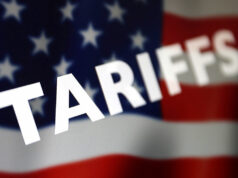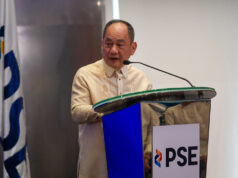Think tanks cut PHL outlook after weak Q3
By Beatrice M. Laforga, Reporter
TWO THINK TANKS lowered their growth forecast for the Philippines this year, after latest data showed a steeper-than-expected contraction in the previous two quarters that signaled a shaky recovery from the coronavirus pandemic.
Fitch Solutions Country Risk & Industry Research trimmed its gross domestic product (GDP) for the Philippines to -9.6% from its earlier forecast of -9.1%. It raised its GDP outlook for next year to 7.6% from 6.2% previously, mainly due to base effects.
“We at Fitch Solutions believe the Philippine economy will struggle to maintain its recovery momentum in Q4 2020 as domestic containment measures weigh on activity and demand. In 2021, base effects and supportive fiscal and monetary policy stances should drive a rebound, with the economy returning to pre-pandemic levels by mid-2022,” Fitch Solutions said in a note released on Wednesday.
The economy contracted by 11.5% in the third quarter after the 16.9% plunge in the second quarter. A BusinessWorld poll of 19 economists last week showed a median forecast of a 9.2% decline in the third quarter.
Coronavirus curbs around the country have gradually been eased since June, but slow state spending and a two-week lockdown in August put a damper on economic recovery.
Fitch Solutions said ongoing mobility restrictions to slow the spread of the coronavirus disease 2019 (COVID-19) weighed on household spending and investments.
Household spending contracted by 9.3% year on year in the third quarter, although this was slower than the 15.3% fall in the second quarter.
Despite a drop in the number of new COVID-19 cases, the think tank said there is a risk that a virus resurgence could slow the pace of economic recovery through the first half of 2021.
Potential investments will likely be postponed while households will remain conservative on spending amid an uncertain environment, Fitch Solutions said. It expects private consumption to contract by 7.8% this year, shaving 5.3 percentage points off the country’s consumption-driven GDP.
“Consumer sentiment for the next three months also indicates a sharp decline in Q3 2020 relative Q1 2020. The subdued outlook dims our view on a strong service sector recovery, which accounts for around 62% of output,” it said.
The economy’s struggle can be seen in the latest manufacturing Purchasing Managers’ Index (PMI) data, which showed a contraction in October.
Fitch Solutions said the economy can only expect limited foreign support to fuel recovery as foreign direct investments (FDIs) remained dampened.
“Fixed capital investment growth is set to remain challenged, eroding headline growth by 10.1 percentage points in 2020,” it said.
On the other hand, Fitch Solutions said economic recovery will be supported by the projected V-shaped rebound in China and better demand in the United States and in Asia-Pacific region, but the return to lockdown in several European countries poses downside risks.
Meanwhile, Capital Economics’ Asia Economist Alex Holmes said in a note on Tuesday that they also slashed the outlook for the Philippines this year to -9.5% from -8% previously.
“The Philippines saw a lackluster rebound in GDP in Q3 and improvements are likely to be harder to come by in the quarters ahead. Output is unlikely to regain its pre-crisis level until late next year,” the note read.
Mr. Holmes said the country’s recovery will be slow as domestic demand loses its momentum with mobility restrictions still in place.
With the sharp contractions in the previous two quarters that put the country in a recession, the government’s projection of up to -6.6% GDP for 2020 is no longer possible, National Statistician Claire Dennis S. Mapa said.
Acting Socioeconomic Planning Secretary Karl Kendrick T. Chua said the Development Budget Coordination Committee (DBCC) will revise its macroeconomic projections given the latest data.
The economic team expects a 6.5-7.5% growth in 2021 and 2022.
Mr. Chua said GDP is expected to be better in the fourth quarter as restrictions were further loosened.
For next year, both think tanks expect growth will be largely due to a low base in 2020. Economic output will only go back to its pre-pandemic level in late-2021 for Capital Economics, or by mid-2022 for Fitch Solutions.
“While growth will look strong next year, this is due to a favorable base. More instructive is that output is unlikely to regain its pre-crisis level until late-2021 and we estimate that by the end of the next year the economy will still be over 10% smaller than if the pandemic had not happened,” Mr. Holmes said.
To support next year’s rebound, Fitch Solutions said the central bank should keep its policy rates steady until the end of the year so loan growth will have more time to recover, while the government should ramp up its spending on infrastructure to create jobs.
“Improving orders and global sentiment will also aid investment plans which have lagged in 2021 and could provide upside to the recovery in fixed capital investment,” Fitch Solutions said.
“The pandemic remains a major uncertainty and headwind to the Philippines economic recovery. Indeed, another upsurge in cases domestically could force the reimplementation of local lockdowns, hampering activity,” it added.



